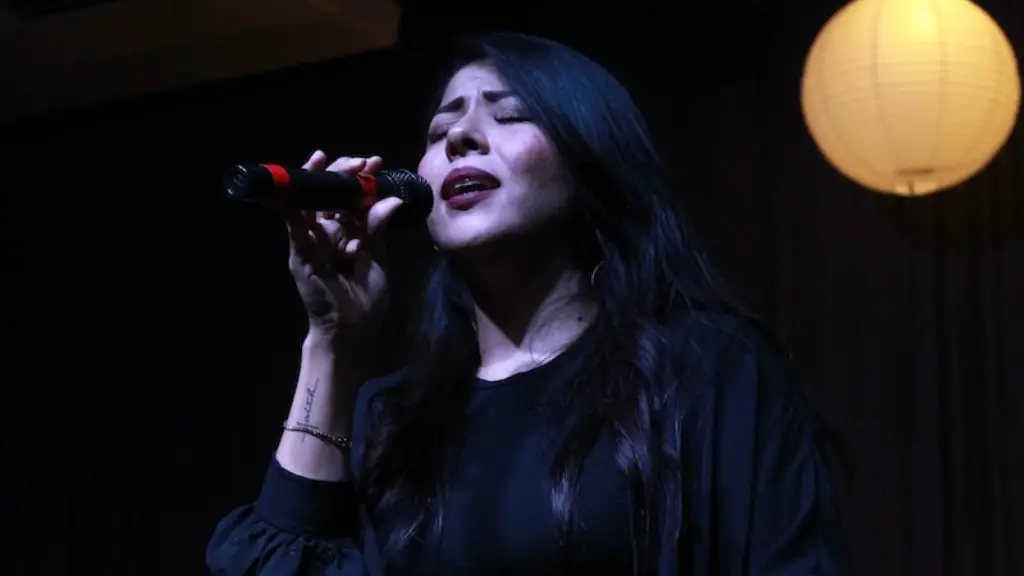Raga is a form of Indian classical music that originated in South Asia. It is based on a melodic mode or scale and is characterized by intricate melody and rhythmic patterns. Raga can be performed solo or in an ensemble, and is often improvisational in nature.
If you’re interested in learning how to sing raga, there are a few things you should know. First, raga is based on a melodic mode or scale, which means that the notes you sing will be based on specific patterns. There are different Ragas for different times of day or seasons, so you’ll need to choose one that’s appropriate for the time you’re singing. Additionally, raga is often improvised, so you’ll need to be creative and come up with your own melodies. Finally, raga is usually performed in an ensemble, so you’ll need to find others who are interested in singing with you.
Now that you know the basics of raga, you’re ready to start learning. There are a number of resources available to help you, including books, online tutorials, and classes. Once you’ve mastered the basics, you’ll be able to create your own Ragas and perform them for others.
There is no one answer to this question, as everyone may have their own method of singing raga. However, some tips on how to sing raga may include studying the scale and melody of the raga, as well as practicing regularly. One may also find it helpful to listen to recordings of other singers to get an idea of how the raga should be performed.
How to sing in raga?
1. Do not try very hard: Trying too hard to sing perfectly can actually make your singing worse. Just relax and let the music flow through you.
2. Drink a little warm water before practicing: This will help to loosen your vocal cords and make them more flexible.
3. Practice different ranges: Don’t just sing in the same range all the time. Practice singing in different ranges so that your voice is more versatile.
4. Master lower range of your voice before the higher: It is actually easier to sing in a higher range if you have first mastered the lower range. So start by practicing in a lower range and then gradually work your way up.
5. Warm up (The most important): Always warm up your voice before singing. This will help to prevent vocal cord damage and will also make your voice sound better.
Yaman is a sampurna (consists of 7 notes) raga from the Hindustani music tradition. It is one of the first ragas a Hindustani classical student learns and is considered to be one of the most fundamental ragas in the tradition. Yaman is traditionally performed in the evening and is associated with a calm and peaceful mood.
Which is the most difficult raga to sing
Raag Deepak (Poorvi Thaat) is considered to be one of the most difficult ragas in Indian classical music. This is because the legendary singer Tansen almost died after singing this raga. Raag Deepak is a very powerful and intense raga that can create a lot of heat in the body. It is said that Tansen was so affected by the raga that his body temperature rose to a dangerous level and he had to be rushed to hospital. Thankfully he recovered but this just goes to show how powerful and intense this raga can be. If you are looking for a challenge then Raag Deepak is definitely the raga for you!
There are many different ragas in Indian classical music, and they can be divided into several different categories. The most common division is into six major ragas, which are Asaravi, Bhairav, Bhairavi, Bilawal, Kafi, and Kalyan. There are also several minor ragas, which include Khamaj, Marwa, and others.
What are the rules of raga?
A raag is a specific melodic mode used in Indian classical music. There are certain rules that a raag must follow in order to be considered a raag. Firstly, the raag must belong to a thaat. A thaat is a set of seven notes on which a raag can be based. Secondly, the raag must be melodic in nature. This means that it must comprise of a minimum of five notes. Thirdly, a raag must have both Aaroha and Avaroha. Aaroha is the ascending order of notes in a raag, while Avaroha is the descending order of notes. Fourthly, each raag has the note Sa present in it. Sa is the tonic note of the raag and is considered to be the most important note. Fifthly, each raag has either Madhyam and/or Pancham present in it. Madhyam and Pancham are two important notes in a raag. Lastly, each raag has a specific time of day when it is to be performed.
Ragas are said to have a calming effect on the mind, particularly in the case of hysterics. Raga malhar is said to pacify anger, mental excitement and mental instability. Raga jaijaivanti is also said to be effective in curing mental disorders and calming the mind.
Which raga is most powerful?
The Bhairav raga is a very versatile raga that can be used to express a wide range of emotions, from valor to peace. It has a very large range of notes that can be combined in many different ways, making it a very versatile raga for both vocal and instrumental music.
It’s interesting to note that the ragas with emotion labels of calm/happy were Hansdhwani, Tilak Kamod, Desh, Yaman, Ragesree, Jog. While the ragas with emotion labels of sad/longing/tensed were Malkauns, Shree, Marwa, Miyan ki Todi, Basant Mukhari, Lalit. This shows that there is a correlation between the emotion labels and the type of ragas.
What are 6 main ragas
The six main Ragas are said to be associated with the time of the day, and/or the season. Raga Bhairav is associated with dawn, Raga Hindol is associated with spring and morning, Raga Megh is associated with monsoon, Raga Shri is associated with dusk, Raga Deepak is associated with evening, and Raga Malkauns is associated with late night and winter.
Ragas are the melodic frameworks of Indian classical music. Each raga has its own unique mood and feel, and can evoke different emotions in the listener. The romantic raga Pilu is one of the most popular ragas in Hindustani (North Indian) classical music. It is often played at weddings and other celebrations, and is known for its lively and joyful feeling.
Amjad Ali Khan is one of the most celebrated classical musicians of our time. He is a master of the Sarod, a traditional North Indian instrument, and has won numerous awards for his playing. In this performance, he is accompanied by Sawani In Mishra Des, a well-known thumri singer.
Lakshmi Shankar is a legendary figure in Hindustani classical music. She was an accomplished singer and teacher, and her recordings are some of the most influential in the genre. In this performance, she sings a dhani, a type of traditional Indian song.
Shahid Parvez is a world-renowned sitar player. He is a gifted musician and composer, and has produced numerous critically acclaimed recordings. In this performance, he plays a raga called Sohini.
Shubhra Gu
What ragas make you sleep?
The raga Nelambari is a powerful sleep inducer, said to be able to promote sleep and have some sleep-promoting qualities.
Madhuvanti is a very sweet raga with a very simple philosophy of love and romance. It is said to be equivalent to Dharmavati, and is similar to Multani, Bhimpalasi, and Patdip.
Which is the most beautiful raga
Hamsadhwani is a beautiful raag of the evening. The raag is said to have been borrowed from the Carnatic Music tradition.
The raag is characterized by a beautiful melody and a peaceful atmosphere. It is perfect for an evening of relaxation and enjoyment.
A raga can be identified by its swarupa, or essential nature. This can be done by experienced listeners who have heard the raga several times and are familiar with its kritis, or melodic phrases. By comparing the swarupa with what the musician sings, the listener can get a sense of the raga’s essential nature.
What is raga called in English?
A raga is a type of melody used in Indian classical music.
Raga is a combination of notes selected from the 22 note intervals of the octave. There are 72 ‘melas’, or parent scales, on which Ragas are based. Raga has its own principal mood such as tranquility, devotion, eroticism, loneliness, pathos and heroism.
Warp Up
There is no one answer to this question as everyone may have their own method of singing raga. However, some tips on how to sing raga may include:
– Choose a raga that is suitable for your voice type.
– Listen to recordings of the raga being sung before you attempt to sing it yourself.
– Repeat the phrases of the raga slowly at first, gradually increasing the speed as you become more comfortable with the melody.
– Pay attention to the details of the raga, such as the specific note combinations (swaras) that are used.
– improvise within the framework of the raga, adding your own embellishments to the melody.
It is said that ragas are like personalities, and each raga has its own unique character. In order to sing raga, one must first get to know the raga and its personality. Just as one would get to know a person before trying to befriend them, one must get to know a raga before attempting to sing it. Once you have an understanding of the raga’s character, you can begin to learn how to sing it.


